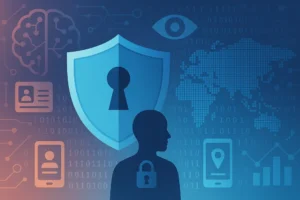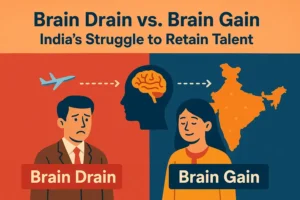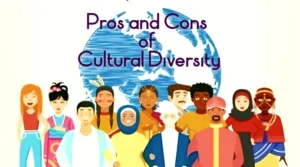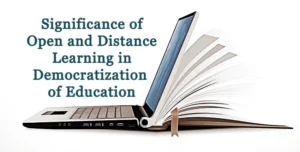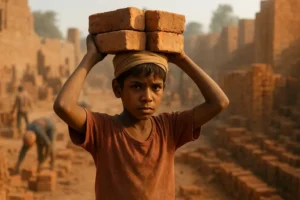Effects of Social Media Misinformation on Indian Elections
Social media has become the heartbeat of Indian politics, but in the 2025 elections, it is also the biggest source of misinformation and fake news.
From WhatsApp forwards to AI-generated deepfakes, false content is shaping voter perceptions, fueling polarization, and raising serious concerns about free and fair elections in India.
With millions relying on Facebook, Twitter/X, YouTube, and Telegram for updates, distinguishing truth from lies is harder than ever.
Let’s explore the effects of social media misinformation on Indian elections, its impact on voters, democracy and the urgent need for digital literacy.
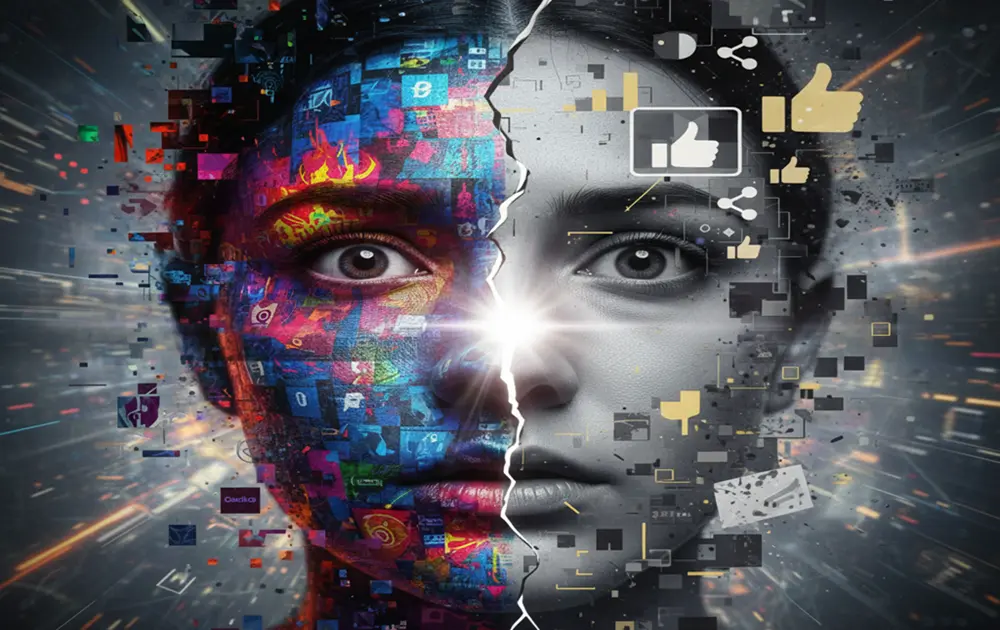
Introduction: Why Social Media Misinformation Matters in 2025
In today’s India, elections are no longer just about rallies, posters, and door-to-door campaigns. They are fought, shaped, and often manipulated on our mobile screens.
A single WhatsApp forward, a viral meme, or a deepfake video can reach millions within hours.
Imagine waking up to a video of a political leader making a shocking statement—only to discover later it was fake. But by then, the video has already influenced opinions, conversations, and even votes.
This is the reality of the 2025 Indian elections, where misinformation has become one of the most powerful tools in shaping democracy.
Before diving deeper, it’s important to understand the difference:
- Misinformation is false or misleading information spread without malicious intent (like a wrongly forwarded message).
- Disinformation is deliberately created falsehood, designed to mislead, confuse, or manipulate.
India, with over 750 million internet users and one of the largest social media populations in the world, is particularly vulnerable.
As smartphones penetrate rural areas and cheap data connects every household, social media has become the primary news source for millions.
While this digital revolution has made information accessible, it has also opened the floodgates for unchecked rumors, fake news, and politically motivated propaganda.
The 2025 elections are not just a contest between political parties; they are also a battle between truth and falsehood.
Social media has blurred the line between fact and fiction, creating a challenge for voters, journalists, regulators, and democracy itself.
In this article, we will explore how social media misinformation works, its impact on Indian voters and elections, real-life examples, and what steps are being taken to fight this rising threat.
The Rise of Social Media in Indian Politics
The last decade has witnessed an extraordinary rise in the influence of social media in Indian politics. Once dominated by posters, roadside rallies, and prime-time television debates, election campaigning today is digital-first.
Back in 2014, the Bharatiya Janata Party (BJP) effectively used Facebook, Twitter, and WhatsApp to reach urban youth.
The “Abki Baar Modi Sarkar” slogan became a viral digital phenomenon. By 2019, WhatsApp forwards had entered nearly every Indian household, influencing conversations in villages, towns, and cities.
From exaggerated claims to emotional videos, the app became a central battlefield.
By 2024, the role of social media had expanded further. TikTok-style short videos, Instagram reels, and YouTube “news” creators became influential voices, sometimes more trusted than mainstream media. Fake poll predictions circulated widely, while deepfake technology began to emerge.
Now, in 2025, India’s electorate is more connected than ever. Over 400 million first-time young voters are heavily dependent on digital platforms for news and political updates.
Parties are investing heavily in social media war rooms, staffed with IT professionals, meme creators, and influencers tasked with setting narratives.
However, the flip side is dangerous. Misinformation has evolved from simple text messages to sophisticated AI-generated content, making it harder for voters to distinguish fact from fiction.
A single viral rumor about a leader’s speech, a communal incident, or a manipulated manifesto can swing sentiments overnight.
Social media has democratized voices, giving citizens a platform, but it has also created an environment where truth competes with manufactured lies.
In India’s high-stakes elections, this digital battleground is as decisive as any physical rally.
Read Here: The Effects of Religious Polarization on Indian Youth
How Misinformation Spreads During Indian Elections
Misinformation in Indian elections doesn’t just appear—it travels at lightning speed. Social media platforms act like digital loudspeakers, amplifying messages without checking their accuracy.
The primary sources include:
- WhatsApp groups: With encrypted chats and thousands of groups, false information circulates unchecked. Rural communities, where WhatsApp is often the main news source, are particularly vulnerable.
- Twitter/X bots: Automated accounts spread hashtags, giving fake news a sense of legitimacy.
- Facebook and Instagram pages: Politically motivated pages share exaggerated claims and edited visuals.
- YouTube creators: Some channels present opinion as fact, drawing millions of views.
- Telegram channels: Known for anonymity, they spread unverified polls and communal rumors.
But why does misinformation spread so easily? The answer lies in human psychology. Fake news often appeals to emotions—anger, fear, pride, or hope.
A shocking rumor about a rival leader or a manipulated video triggers instant reactions. People forward without verification because they feel part of a cause.
For example, before polling, a fake claim about changes in voting dates can discourage turnout in specific areas. Similarly, communal rumors fuel division, polarizing communities along religious or caste lines.
Misinformation thrives on speed over accuracy. Fact-checkers and journalists take hours or days to debunk falsehoods, but by then, the viral post has already influenced lakhs of voters.
Algorithms also play a role—social media platforms prioritize content that generates engagement, meaning controversial or sensational posts spread faster than neutral fact-based news.
This phenomenon isn’t unique to India, but the country’s scale, linguistic diversity, and political intensity make it particularly vulnerable.
In an election with over 900 million eligible voters, even small-scale misinformation campaigns can impact results in closely contested constituencies.
Thus, misinformation in India isn’t just about “fake news.” It’s about systematic manipulation of voter perception, designed to shape electoral outcomes.
Key Types of Social Media Misinformation in 2025
Not all misinformation looks the same. In the 2025 Indian elections, fake content has taken many shapes—each carefully crafted to influence voter opinion. Here are the most common types:
1. Political Propaganda
Political parties and their supporters often circulate exaggerated or false claims about their achievements or rivals’ failures.
A manipulated infographic showing inflated job numbers, or a video falsely claiming that a rival promised to cancel welfare schemes, can sway undecided voters.
2. Communal and Religious Rumors
India’s diversity makes it vulnerable to divisive narratives. WhatsApp forwards about alleged attacks on temples or mosques, or fake reports about one community receiving special benefits, are designed to create anger and distrust.
Such rumors can trigger real-world clashes, influencing not just votes but also social harmony.
3. AI-Generated Deepfakes
Perhaps the most dangerous new trend in 2025 is the use of deepfake technology. These are hyper-realistic videos or audio clips generated using artificial intelligence, making it appear as though a politician said something they never did.
A deepfake of a leader making communal remarks or mocking a rival can go viral within hours, damaging reputations.
4. Fake Poll Predictions and Surveys
Polls influence perception. Fake opinion polls and surveys circulate widely on Twitter/X and Facebook, suggesting one party is leading by a huge margin.
This creates a bandwagon effect, where voters may feel their preferred candidate has little chance and switch sides.
5. Paid Influencers and Micro-Targeting
In 2025, not all misinformation comes from faceless trolls. Influencers with large followings on Instagram, YouTube, and Twitter often get paid to push subtle narratives.
Some may present misleading comparisons or promote unverified claims, shaping the opinions of young digital voters.
With micro-targeting, political messages are tailored to specific demographics—urban youth, farmers, first-time voters—making misinformation more persuasive.
These different forms of misinformation create a complex digital battlefield. Each type works differently, but the ultimate goal is the same: to shape how voters think, feel, and act on election day.
Effects of Misinformation on Voter Behavior
The heart of democracy lies in informed choice. But when voters are misled by fake news, their decisions are no longer based on truth.
Confusion about Policies and Manifestos
Misinformation clouds understanding. Voters often receive fake comparisons of party manifestos, making them believe promises were made—or broken—when in reality, no such policy exists.
Shaping Perceptions of Leaders
A single viral clip can change how millions view a candidate. A deepfake of a leader insulting farmers could turn rural voters against them. Once the seed of doubt is planted, it’s hard to reverse, even if debunked.
Emotional Decision-Making
Fake news works because it plays on emotions, not logic. Fear of losing jobs, anger over communal rumors, or pride in exaggerated achievements—all of these drive emotional voting rather than rational evaluation.
Community Polarization
Rumors designed to pit communities against one another lead to polarization. Instead of uniting around shared concerns like unemployment or healthcare, voters are divided along religious, caste, or linguistic lines.
This distortion of voter behavior is not a small issue—it fundamentally alters the democratic process. When votes are cast based on lies, the very legitimacy of the election comes into question.
Effects on Electoral Process & Democracy
Beyond voters, misinformation also impacts the system of democracy itself.
Undermining the Election Commission
When fake claims about rigged machines or altered voter lists spread, people lose trust in the Election Commission. Even baseless rumors weaken confidence in the fairness of elections.
Distrust in Mainstream Media
Social media misinformation often frames traditional media as “biased” or “controlled.” This pushes people further into echo chambers where they only consume content that reinforces their beliefs.
Threats to Free and Fair Elections
If a large section of voters makes decisions based on lies, can the election truly be called free and fair? The spread of misinformation skews the playing field, giving unfair advantage to those who exploit it.
Long-Term Damage to Democracy
The deeper danger is erosion of trust. If citizens start believing that politics is only about manipulation, they may disengage altogether. A democracy without trust is like a building with a cracked foundation—unstable and fragile.
Thus, misinformation is not just an election-season problem. It’s a long-term threat to India’s democratic health.
Real Examples of Social Media Misinformation in 2025 Elections
Misinformation in the 2025 elections hasn’t been theoretical—it’s already played out in real incidents.
Case 1: WhatsApp Rumor Before Polling
In a northern state, a viral WhatsApp forward falsely claimed that polling booths in certain areas had malfunctioning EVMs (Electronic Voting Machines). The rumor spread panic, leading some voters to skip voting altogether. Fact-checkers later proved the machines were fine, but the damage was done.
Case 2: Deepfake Speech Circulates Online
A deepfake video of a senior leader went viral, showing him allegedly making derogatory remarks about a community. Despite being debunked within 48 hours, the clip was shared millions of times. For many voters, the retraction never reached them.
Case 3: Fake Opinion Polls on Twitter/X
Just days before voting, several polls claiming “landslide victory” for one party began trending. Many of these were traced back to anonymous accounts. While the Election Commission clarified that these polls were not official, the impression of a “clear winner” shaped discussions in media and society.
These cases highlight the speed, scale, and impact of misinformation. Even when debunked, the falsehood often leaves a lasting impression—what experts call the “stickiness of lies.”
How India Is Fighting Social Media Misinformation
India has recognized the dangers of misinformation, especially during elections, and multiple efforts are underway to combat it.
Fact-Checking Platforms
Independent organizations like Alt News, BOOM, Factly, and India Today Fact Check have become crucial in busting fake claims. They analyze viral posts, verify facts, and publish corrections. Though their reach is smaller than WhatsApp forwards, they provide credibility to counter-narratives.
Election Commission Initiatives
The Election Commission of India (ECI) has partnered with social media platforms to flag misleading posts. It also issues official clarifications on voting schedules, rules, and fake news about EVMs. In 2025, ECI has stepped up its use of AI to track digital manipulation.
Social Media Platform Policies
Facebook, Instagram, and Twitter/X have started labeling or removing fake news. WhatsApp limits forwards to reduce mass-spreading of rumors. YouTube now flags suspicious political content and demonetizes misleading videos. However, critics argue these measures are not always consistent.
Citizen-Driven Awareness
NGOs and grassroots groups are training young voters in digital literacy—teaching them to verify news before sharing. Campaigns like “Think Before You Share” and “Check the Source” are spreading awareness, especially in rural areas.
While these efforts are commendable, the challenge is massive. With millions of messages circulating every hour, fighting misinformation is like “catching rain with a sieve.” Still, every fact-check, clarification, and awareness campaign makes democracy a little safer.
Global Lessons: Misinformation Beyond India
India is not alone in battling misinformation during elections. Other democracies have faced similar challenges, offering valuable lessons.
United States
The 2016 and 2020 U.S. elections were marred by misinformation campaigns, including Russian bot interference. Fake news about candidates spread widely on Facebook, showing how foreign actors can influence domestic politics.
Brazil
WhatsApp was central in Brazil’s 2018 and 2022 elections. False claims about voting machines and manipulated videos went viral. The Brazilian government introduced strict laws against electoral disinformation, though critics warned about overreach.
Philippines
Here, influencers played a major role in spreading political propaganda. Paid bloggers and social media stars shaped voter opinions, often pushing misleading narratives. This showed how misinformation can blend with entertainment culture.
From these examples, India can learn that:
- Regulation must balance free speech and accountability.
- Fact-checking needs to be faster and more visible.
- Digital literacy must be part of education.
The global battle proves one thing—misinformation is not just an Indian problem, but a worldwide democratic crisis.
The Future of Elections in the Age of AI and Deepfakes
The future of elections in the age of AI and deepfakes is both promising and perilous—where innovation meets manipulation, and democratic integrity hangs in the balance.
Looking beyond 2025, the challenges will only grow.
AI-Powered Misinformation
Deepfake videos and AI-generated texts are becoming more sophisticated. Soon, it may be nearly impossible for the average voter to tell real from fake. Even “voice clones” of leaders can spread chaos.
Speed vs. Truth
Fake news spreads instantly, while fact-checking takes time. Without stronger tools, misinformation will always have a head start. AI-driven fact-checkers may be the next step, but they too risk errors.
Regulation vs. Freedom
Governments will likely push stricter laws to regulate online content. However, there is a fine line—too much regulation risks censorship, while too little risks chaos. Finding balance will be critical.
Digital Literacy as a Shield
Ultimately, the strongest defense is an aware citizen. If voters learn to question sources, verify claims, and resist emotional manipulation, misinformation loses power. Just as literacy campaigns transformed India’s education landscape, digital literacy campaigns could safeguard its democracy.
The future will depend not only on technology and laws but also on citizens’ critical thinking skills. The more informed the voter, the stronger the democracy.
Read Here: How Religion Influences Morality in Secular Societies
Conclusion: The Road Ahead for Indian Democracy
The 2025 Indian elections have shown that misinformation is not just an inconvenience—it’s a threat to democracy itself.
From WhatsApp rumors to AI deepfakes, fake news shapes perceptions, divides communities, and undermines trust in institutions.
Yet, hope remains. Fact-checkers, the Election Commission, social media platforms, and citizens are fighting back. The challenge is enormous, but so is India’s democratic spirit.
The real test lies ahead: will voters choose to pause, verify, and think critically before believing what they see online? Because in the end, democracy isn’t just about casting votes—it’s about casting informed votes.
As India looks toward 2029 and beyond, one question lingers: Will we trust the ballot box—or the algorithm?
FAQs
Q1. How does social media misinformation affect voting in India?
Social media misinformation confuses voters, spreads fake narratives, and influences emotional decision-making, often leading to misinformed choices.
Q2. Which social media platforms spread the most misinformation in India?
WhatsApp, Facebook, Twitter/X, YouTube, and Telegram are the most common platforms where misinformation circulates.
Q3. What role do deepfakes play in Indian elections?
Deepfakes make politicians appear to say or do things they never did. These AI-generated videos can damage reputations and mislead voters before the truth is revealed.
Q4. How is the Election Commission tackling misinformation?
The ECI monitors digital platforms, issues official clarifications, partners with fact-checkers, and works with social media companies to flag or remove misleading posts.
Q5. What can voters do to fight misinformation?
Voters can verify information before sharing, rely on trusted news sources, follow fact-checking organizations, and avoid forwarding unverified messages.
